The All-Star matchup takes place at the Nevada WSOP Poker tables on two 6-max $10/$20 tables. Participants have to sit down when someone else comes to them, and spectators need to multiply all the numbers by ten in their minds – the stakes in this match, as announced, are actually $100/$200. Galfond plays from the studio in his house, Cates from the hotel. There is no information about side bets, but it’s hard to believe they don’t have any.
Unlike the first matches, where he was up against online pros, Galfond streams with open cards and comments on almost all decisions; it's over ten hours of free content that rehashes many of the principles of Phil's paid heads-up course (sold for $2,499). Cates also streamed, but only occasionally, and was not particularly distracted by conversations during the game, but he was very sincerely happy about successful bluffs. A funny nuance: unlike a sophisticated opponent, he streamed his cards without delay!
On the first day, Phil won about $10,000 but was not satisfied with the quality of his game. On the second day he lost $50,000, but the quality, according to Phil, improved, and he even found the strength to make an additional video with a story about the biggest pots. The third day was even more difficult, at one point Phil was down $115,000, but in the end, he won back most of the loss and ended the day losing $35,000.
We should add that the 750 hands played in 2020 in the old Run It Once room do not count toward this match. There Galfond won €86,870.
There is no official site for the match this time. In the past, charts were drawn on the page of the website of the European Galfond room, but now it is closed, and the company has been sold to the largest operator of American casinos. Reports go out on Phil's Twitter. In general, it is obvious that an easy walk against the offline pro has not worked out.
The style of play of both players in the match was easily guessed before it began. Galfond relies on the simplified GTO strategy detailed in his course but is not shy about deviating from solvers when his intuition dictates. Cates plays in a less technical style. According to Galfond’s feelings, the opponent is bluffing a little (in hands without a showdown, the players agreed to send their cards to each other in the messenger), according to individual analysts who analyze sessions on Twitch in detail, he is simply bluffing right and left, and nothing can be thrown against him at all. In general, it’s a bluff machine against a GTO sensei: high variance and unpredictable results, because it is impossible to wait for the planned 7,500 hands.
Let's look at the biggest pots of the second session through the eyes of Phil Galfond.
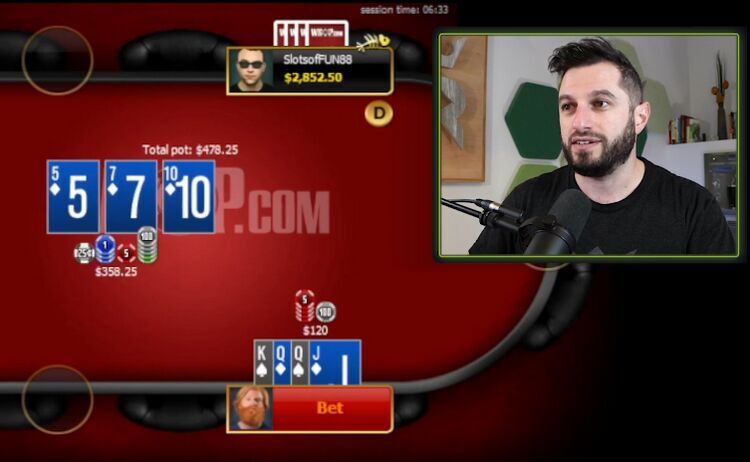
I 3bet preflop and got called. On the flop I made a continuation bet, so far everything is very standard. On this texture, I would continue sizing a third of the pot with the whole range.
Jungleman calls.
Turn ($598):
The first fork in the road: try to collect three streets of value with small (or large) sizings or play from a check. I figured that on a board like this, when the bottom straight closed, a lot of hands in my range would be uncomfortable, and I decided to check to protect them. Jungleman checked back.
River ($598):
Now I have a clear pot-bet, I bet $600. Check-raising is too subtle, especially since I also have a jack, but such a line is also possible in principle.
Jungleman raises $2,400. It depicts the first or second flush. I have to determine which hands he has more – flushes or naked blockers. It seemed to me that my decision was very borderline, my intuition was also silent, but I made a call. Luckily, I was lucky he had pre-flop slow-played aces with two pair and no flush.
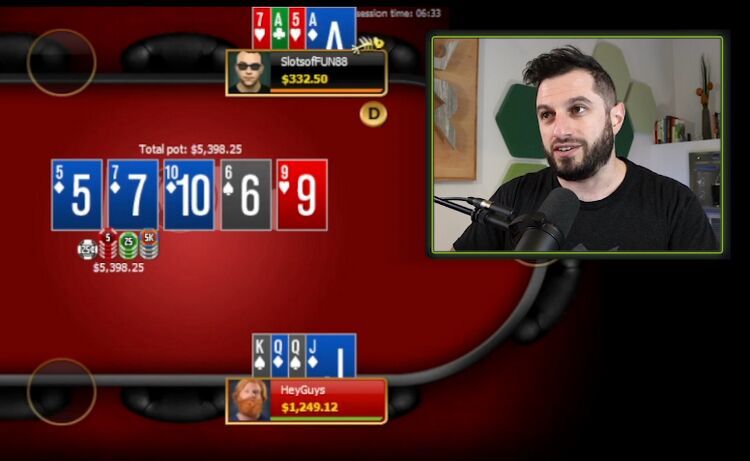
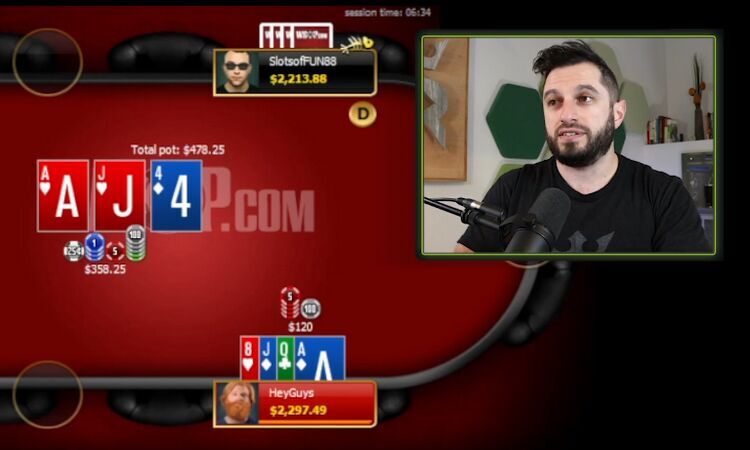
3-bet pot again. On the texture with a flush draw, I have two sizings – a third pot and a full pot. Many go to a full pot, but not these as I have the nut backdoor flush draw and it's to my advantage to keep more of my opponent's hands in the game.
Jungleman calls.
Turn ($598):
And that's why! On the turn, I obviously have to bet, a check is no good, and the sizing is negotiable. What is the problem with the check? A hand this strong should check-raise, but then we're batting too many dominated hands. It's much better to bet and get called by weaker two pair, lower flush draws, etc.
I bet $450. Jungleman called.
River ($1,498, effective stack $1,643):
A difficult spot on the river. I have very few options. The range consists of flushes, missed draws, and weak ready-made hands like sets and two bigger pairs. I decided to check it. I'll get it in with a flush anyways, there won't be much difference with straights either – he won't always check with a straight, but he won't always call my bet either. A sharp player will help you by bluffing with missed draws.
Jungleman bet 3/4 of the pot and called the rest when I moved all-in.

It was a cooler.
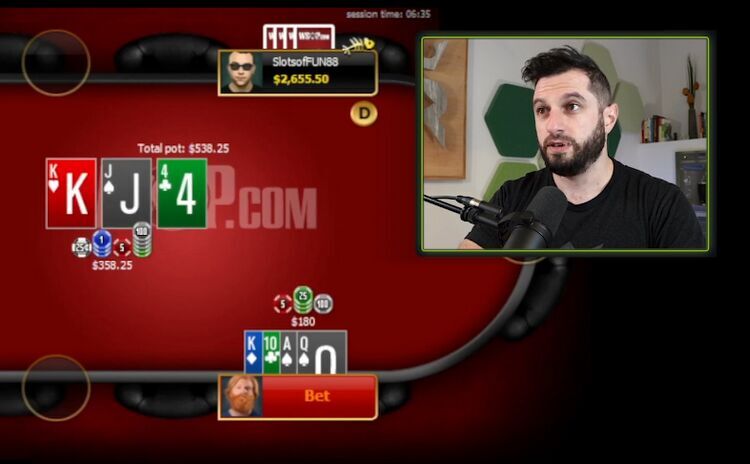
3-bet pot again. The flop is very good, allowing me to bet my whole range. You could say that in 3-bet pots I can 100% c-bet all rainbow flops with two broadway cards. The solver bets with 90% of hands, but I'm far from its accuracy.
Jungleman calls.
Turn ($718):
I decided to bet $540. You can play different and in several ways.
Jungleman calls again.
River ($1,798, effective stack $1,935):
A very bad card. I check, Jungleman bets $1,800. It's bad that I have an ace, a queen, and a ten in my hand – I would like to see these cards in my opponent. And even the fact that the ten of clubs does not really help me. It's hard to find enough bluffs for your opponent. I folded.
Jungleman raises, and I defend the big blind.
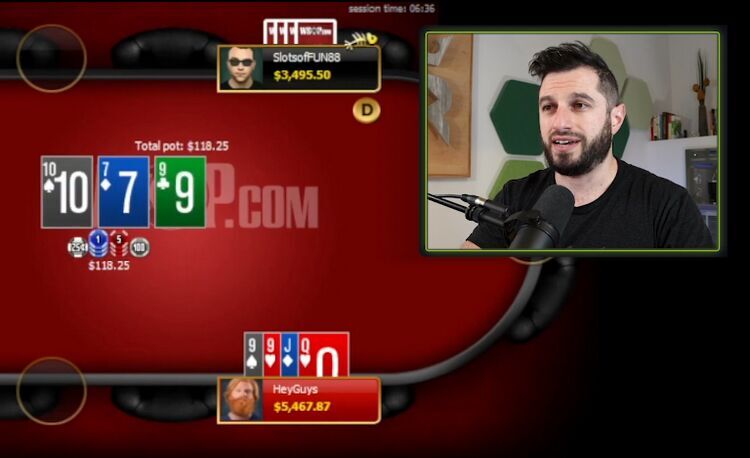
Great flop. I check, he bets $60, I check-raise to $240. Never check-call with an open-ended second set, it's too strong a hand.
Jungleman calls.
Turn ($598):
I think I made a mistake on the turn. I should have kept betting and checked instead. Jungleman bet $400 and I was faced with a tough decision: check-raise to get a straight like and hands with equity, or call and realize your equity. In the second case, I'll lead most of the rivers that hit my outs. I decided to call.
River ($1,398):
Must bet on such a river I bet $1,400 and Jungleman unfortunately folded.
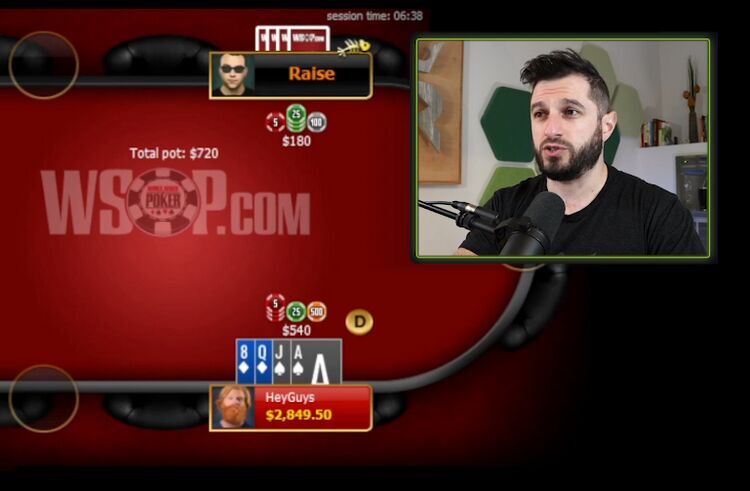
The effective stack is about 160bb, I put the standard 4-bet. Jungleman calls.
Flop ($1,078):
Jungleman checks. I think with top pair I have to bet. You have to choose between large and small sizing, but after any of them, I don’t throw it away.
Bet $1,080. I'm not completely sure that this is optimal, but at least this is how I knock out , which is good. If we're shoving, I'm usually a little behind, but there are hands I'm good against.
Jungleman shoves and shows slow-played aces. I think he should have shoved them in preflop, but his line is not devoid of logic. By eye, I have 35% equity on the flop or a little more.
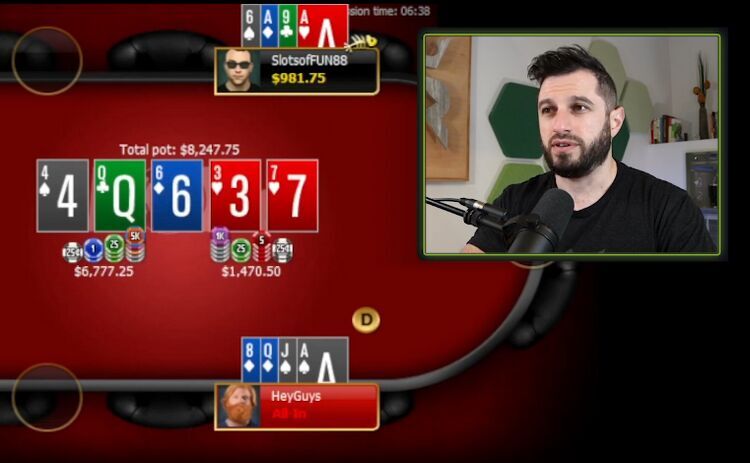
We don't get there, and he wins a big pot, over $60,000 in real match terms.
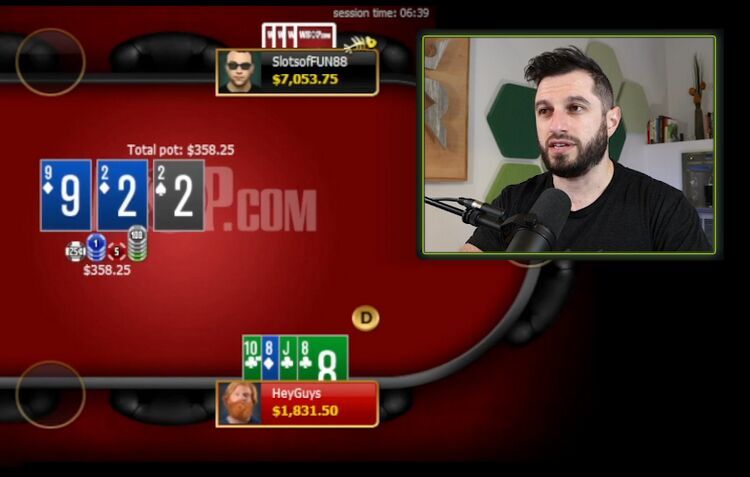
I raised preflop and called the 3bet. Jungleman checks on the flop, I check next. Don't bet with my hand, it doesn't make sense – you get called by all the stronger hands and fold by the weaker ones.
Turn ($358):
Jungleman checks again. Many in my place would prefer a small sizing, but I believe that since I represent trips and fulls, I should bet big, so I bet the pot. Don't think that because I checked the flop, I don't have trips – I have to check some of them. Since there are many in his range and , it is hardly profitable for me to bet with a small sizing with . In general, my strategy in this spot is to bet rarely, polarized, and big.
Jungleman calls.
River ($1,078):
Jungleman checks. I bet the pot again, of course. He check-raises.
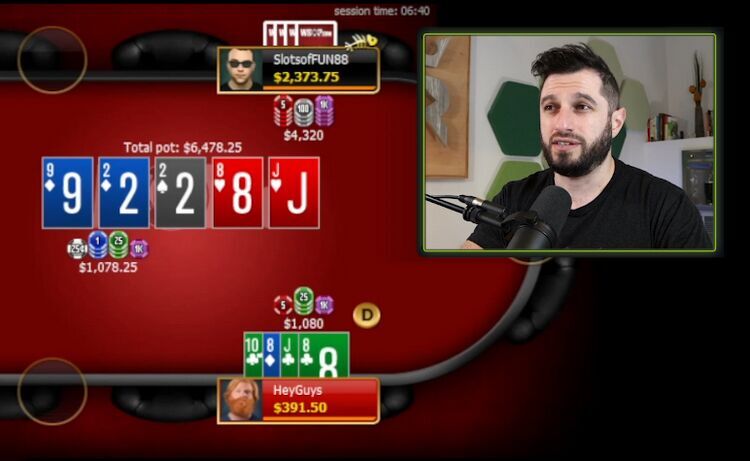
Obviously, I won't fold, but it's also obvious that I'm behind his range. However, what he will push here , makes my call possible even if he is denied the right to bluff. Although the combinations and he has more.
Without much joy, I make the call.
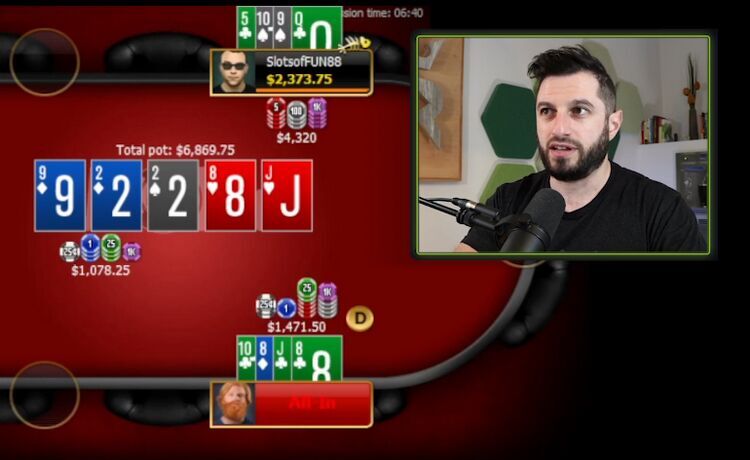
I don't think he made a good push. Not complete nonsense, but still negative. Apparently, he decided that since I rarely slow-play trips on the flop, I have few full houses. Or, on the contrary, he thought that I would often continue to bet the river with unimproved trips. One out of two.
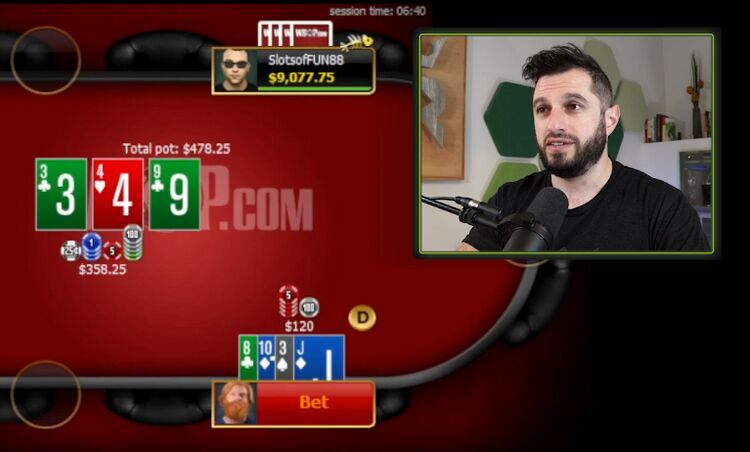
I raised preflop, called a 3-bet and now I check. This is a good hand for bluffing – I could have clubs, three of a kind, and some backdoor draws.
Jungleman calls.
Turn ($598):
Jungleman checks. The perfect turn for me. Now I can bet the pot for value and will gladly call if need be. You can also bet 3/4, but I like the full pot better.
He calls.

Jungleman checks.
So far, everything has been very standard, especially pre-flop and turn, only on the flop there are options. Now I have to decide how often I lose , , , , , and he would shove sets on the turn. Chances are in his range is small due to preflop action, but and are available.
I decide to go thin and get called.
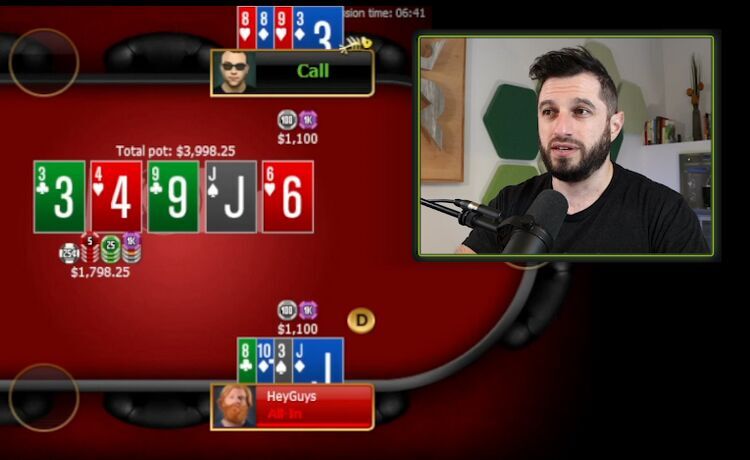
Luckily, he has two pair smaller than me.
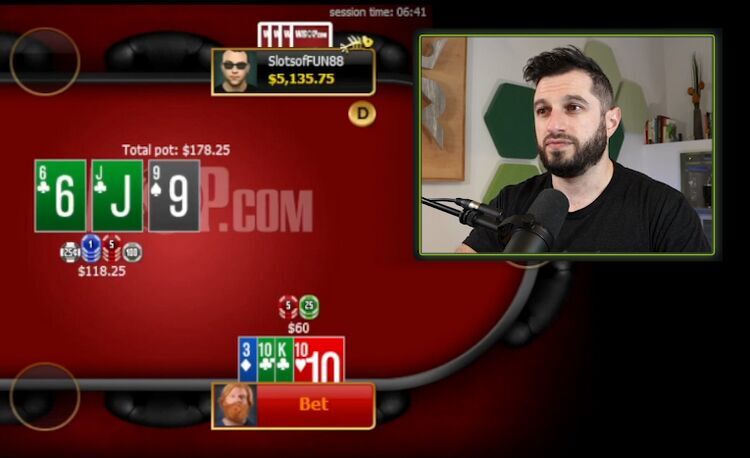
Before the flop, Jungleman limped and called my raise. I bet a standard continuation bet and he calls.
Turn ($238):
I decide to check-raise to eliminate , equity bluffs, and some two-pair hands.
He bets $240 after my check. I raise to $960. He calls!
River ($2,158, $920 effective stack):
I give him with redraws, with a flush draw, something like that. I think I should be bluffing – my stack is a little over two times the pot, deep enough for a bluff shove. If he finds a good hand to call, so be it, but I represent the nuts very convincingly.
He calls with all nines in the deck.
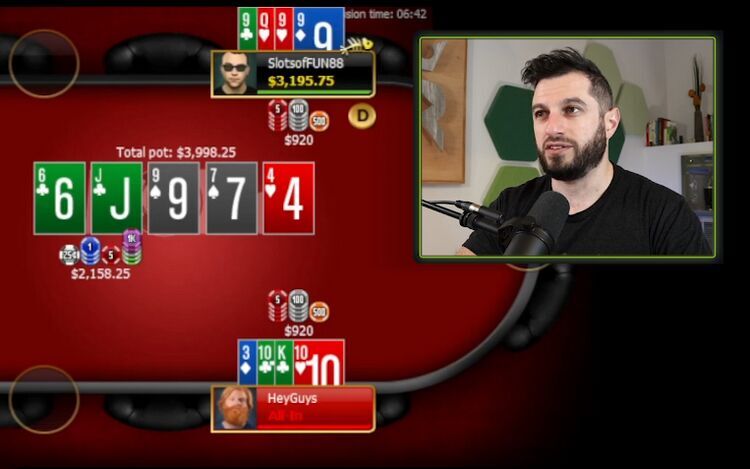
(Next, Phil repeats his reasoning, previously expressed on the stream, that the queen is a very important straight blocker, they say, even with . Jungleman should probably have folded, apparently forgetting that there are no queens on any straight, but there are plenty of them on missed straight draws. A strange glitch, which was also repeated when parsing the hand!)
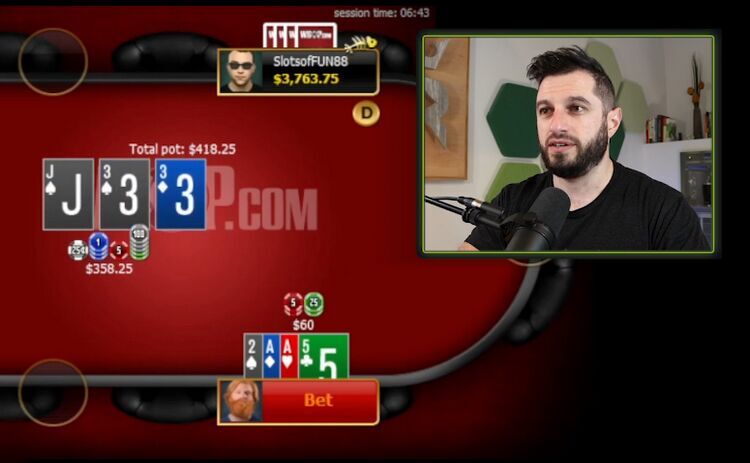
3-bet with aces, albeit weak ones. Jungleman calls. On the flop, it’s a standard c-bet with the whole range and very small sizing. Jungleman calls.
Turn ($478):
I bet $160. Again a small bet, more or less standard, but check-call can also be played. Jungleman raises to $760. Throw out [Ax][Ax] with a wrap, of course, it is impossible, although it represents trips and better.
River ($1,998, effective stack $1,309):
I check, and he goes all-in. I decided to fold, although the decision is close, but at a distance, as it seemed to me, the call will play in the red. He had [Qx][3x], so in fact the fold turned out to be good.
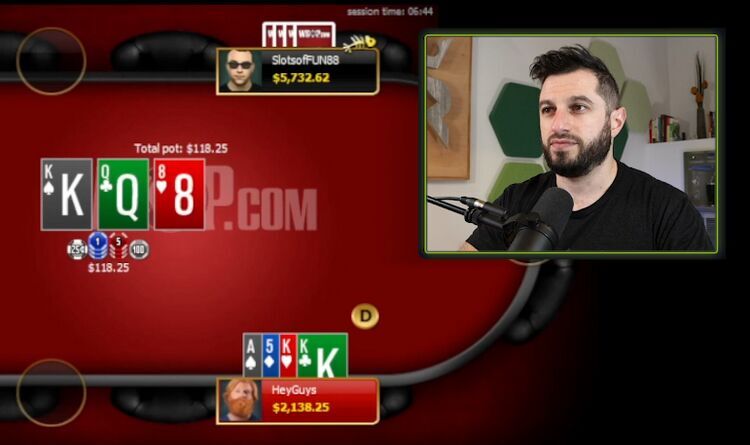
Standard preflop raise, Jungleman calls. Top set on the flop, check bet $90, simple solution.
Turn ($298):
I still have the nuts. We put $300 in the pot. A full pot is my only sizing. Jungleman calls.
River ($898):
Jungleman checks. I still actually have the nuts, I bet $900. In response, he pushes all in.

Happy to pay it off there, he had . During the stream, I tried to count the combinations, and it turned out that the push for him is correct, although quite close to the border. Pushing is better than calling – Jungleman is good.
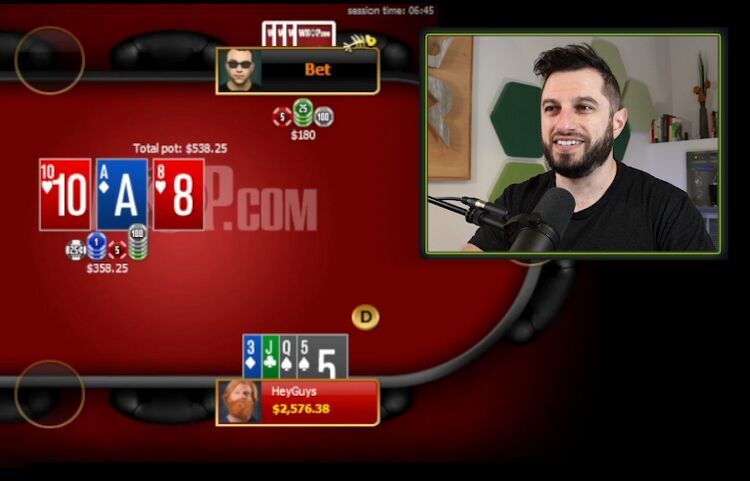
I raised preflop and called the 3-bet. The flop is the standard call for me with a double gutshot.
Turn ($718):
My outs get there, and Jungleman bets $540. I discussed the situation in detail on the stream, but I will not load you with all the nuances now. In general, it turned out that shoving is more profitable than calling. I shoved and he folded.
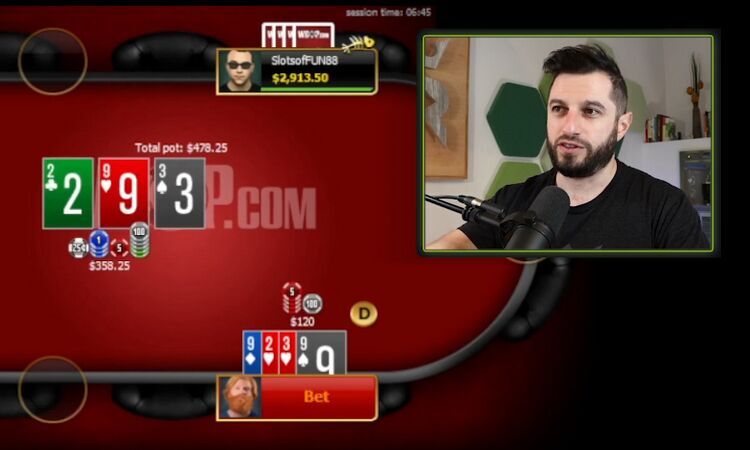
Raised, called a 3-bet, and got all the board hits. Made a small bet into Jungle's check and he called.
Turn ($598):
He checks. Close decision, I decided to check too to keep hands like .
River ($598):
He bets $450. I have a difficult choice between calling and raising. I ended up raising because I have the best hand here too often. I raised it to $1,950, he threw away .
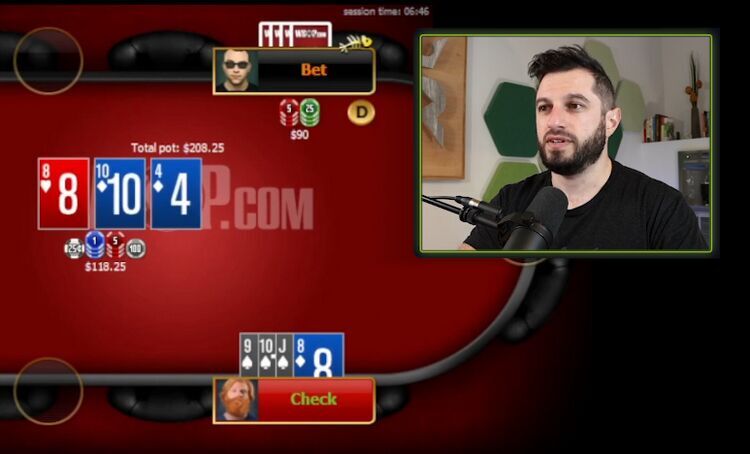
Defended the big blind. Flopped two top pair open-ended and check-raised them for $315. Jungleman paid.
Turn ($748):
I continue with full pot on the turn, and in response, he goes all-in. Against the same hand with slightly more outs per redraw, but not by much.
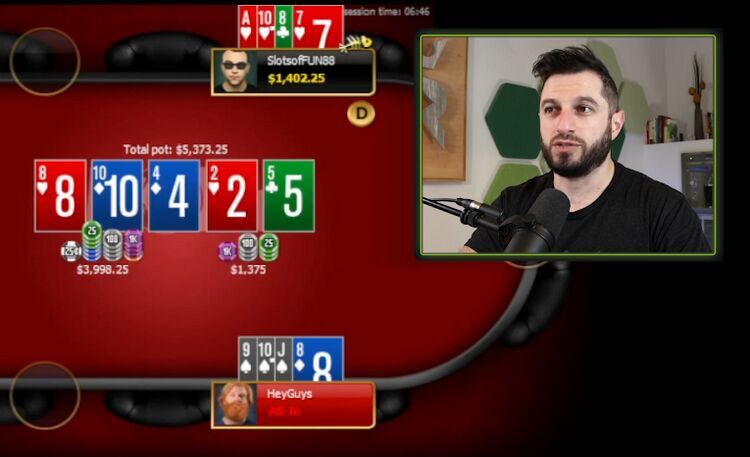
We chop.
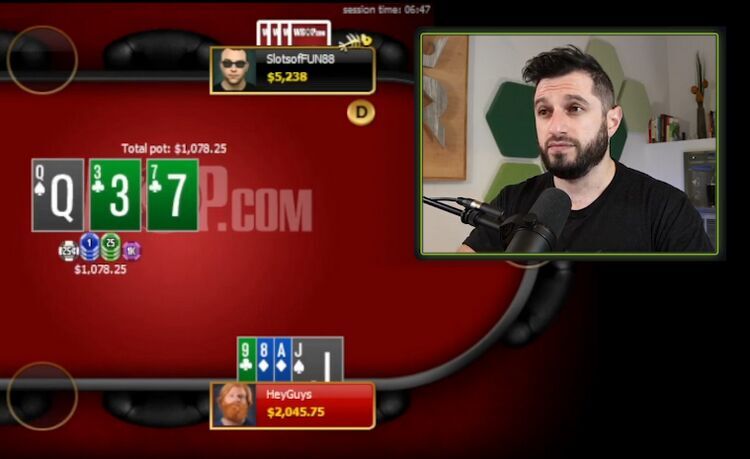
Oh, here's an interesting one. I 3-bet and call 4-bet as usual with my hand. I check the flop, and he checks next.
Turn ($1,078):
Since he's likely to shove on the flop with aces, he should have a weak range. And I, it seems to me, should have some hands that, firstly, can bet-fold, and secondly, can bluff on the river or . This hand looks good and I bet the full pot, planning to fold to a shove of course since I only have a gutshot. But he calls.
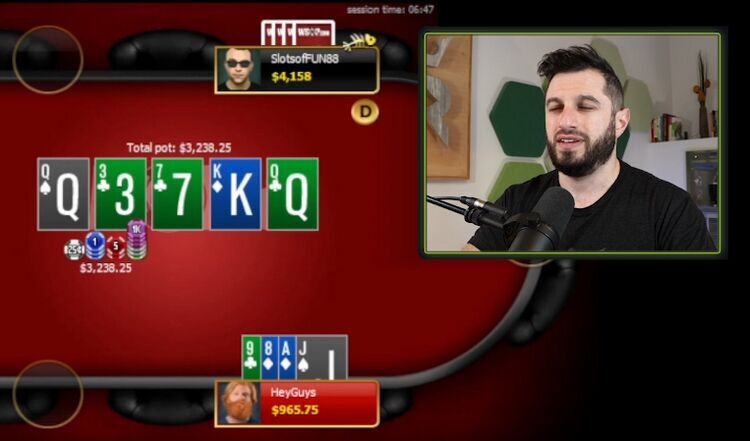
I should of course close my eyes and bluff, hoping he has a hand like , , in that spirit. The queen doesn't bother me, because with a queen he will almost always shove on the flop.
I go all-in and get called by a hand that is not the most predictable.
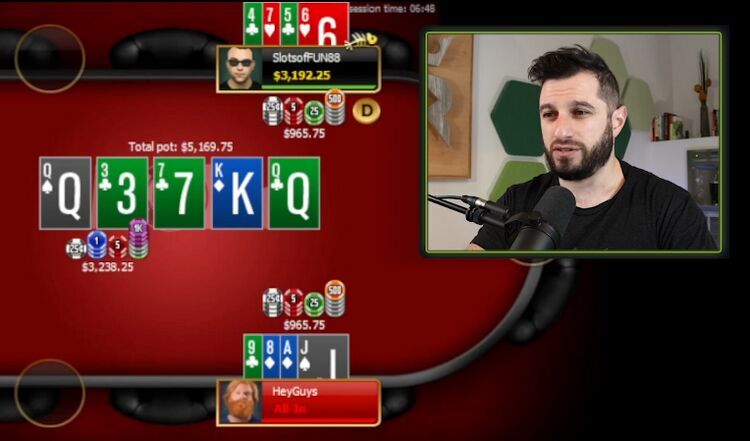
I can understand why he played it that way. My line is also quite reasonable, I do not regret anything. Bad river – on many other rivers my bluff would have worked.
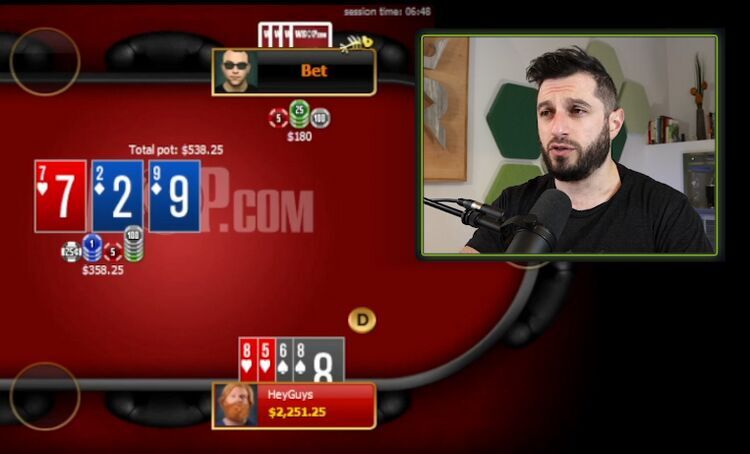
I raised preflop and called the 3-bet. An easy call on the flop with a wrap.
Turn ($718):
He bets $360. Simple call again – I have too much equity against the frequently seen in his range , , .
River ($1,438):
Jungleman bets $1,120. Unfortunately, with this bet, he represents a hand stronger than mine, so I only have a bluff catcher. But at least there are two eights blocking , so I should call. Can he bet for value with ? I don't know, it's possible. He also has bluffs, but in this hand he showed and took the pot of $36,783.
And this is the last big pot of the session. Everything started well but after a huge pot with two-suited it all went wrong and I ended up in the red by about 50k. However, I played well, just the cards did not comply.










